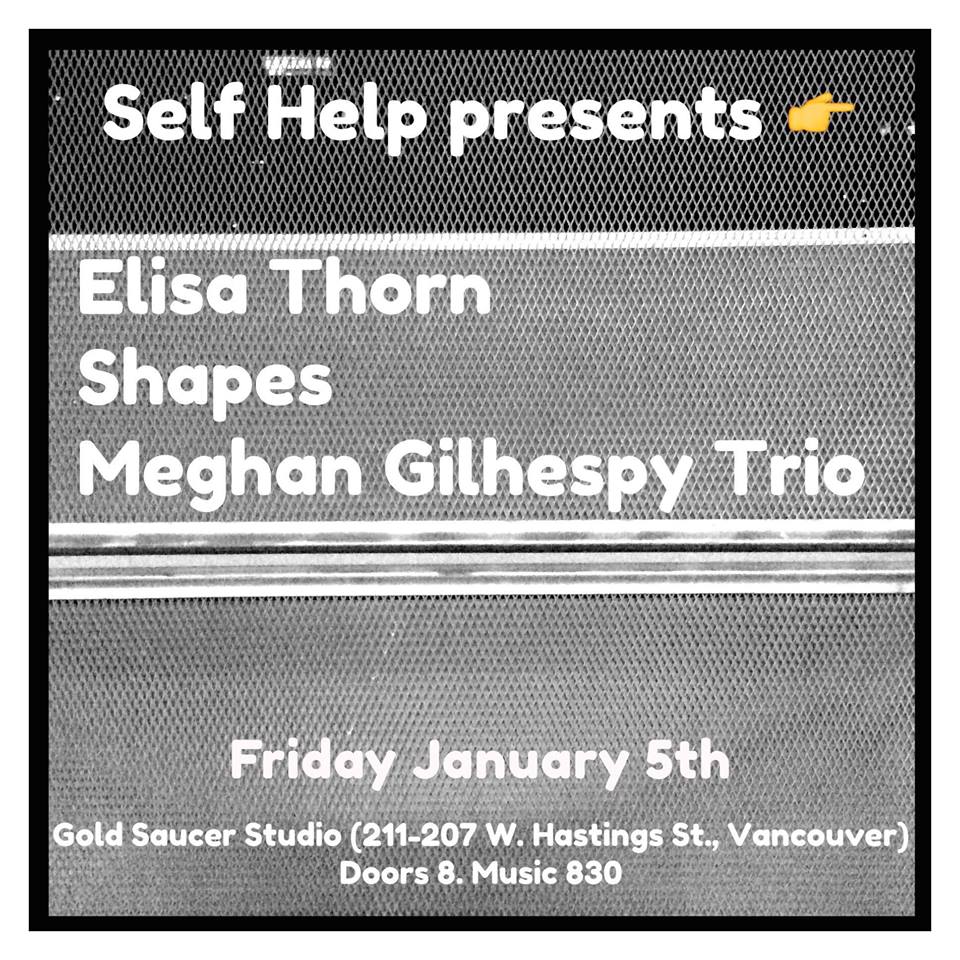“Nice. It’s finally here.”
You board the bus and take a seat. Twenty minutes later you exit the bus and continue walking through a public square. You wait at the entrance of a building until a friendly face opens the door and escorts the crowd to a warm room. Four rows of chairs gently curve around the stage; some couches line the front row and a few elevated perches line the back row.
You take a seat as Elisa Thorn begins to tune her harp. She jokingly howls into the microphone before filling the room with her music: looped harp paired with harmonized hushed breaths. The harp loops sway with subtle rhythmic accents, only to be embraced by the texture Thorn adds with vocal and string manipulations. Her performance lifts you onto a dreamy cloud, with lyrics occasionally peaking through to paint your mind with colours. There are six compositions (five, if we don’t count the one that only temporarily existed) and Elisa Thorn remains casually in command of her music and the attentive audience.
Applause marks the first break. People hydrate and you skip off to the loo. Fifteen minutes later, Shapes — a sextet led by Eli Davidovici on upright bass — takes the stage. Davidovici makes some acknowledgements to the performers, audience and Self-Help (the night’s host). He states, “This is my music,” before the group breaks into a hypnotic set of improvisation.
The two drummers’ creative percussion creates a wave through the group. The bass immediately finds a pocket. Two guitarists respond with textural swells. A piano melody briefly sails above the group before anchoring to the bass line. The sextet shows signs of free form improvisation that hints at post-bop and modal awareness.
Applause marks the final intermission. You stand, stretch and converse.
The Meghan Gilhespy Trio arranges on stage. Gilhespy is seated opposite the upright bass and guitar accompaniment. She calmly introduces her music — vocal lines that remain delicately playful alongside the steady melodic line of upright bass and guitar. The trio guides the audience through a handful of original songs that exhibit composure and cohesiveness.
Applause punctuates the end of the performance. You put on your coat and thank the hosts as you exit the room. Descending to the building’s front door, the melodies that filled the room now reverberate in your head. You open the door and look over your shoulder. The reflection of the bus lights flicker from a few blocks down.
“Nice. It’s here.” It looks like you’ll make it.


